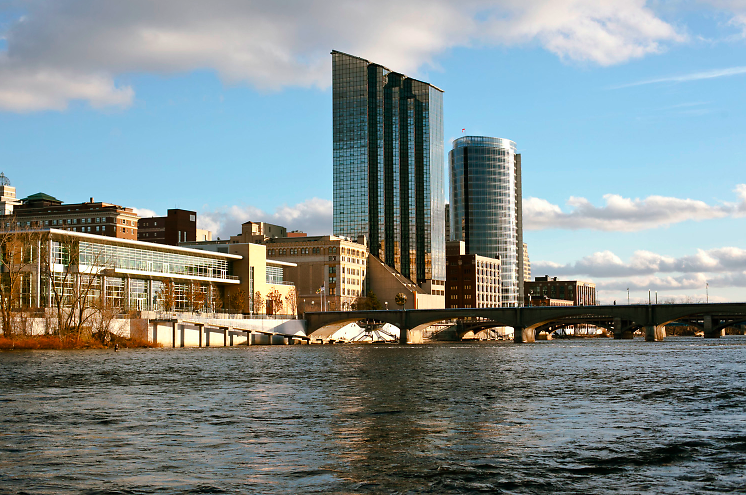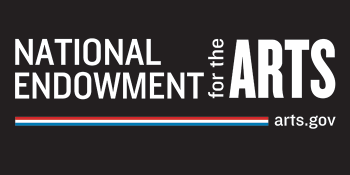Written by Kristopher Larson, AICP
Civic involvement knows many forms. On a daily basis, citizens choose whether to help shape their local laws and regulations by coloring completely the ovals adjacent to their preferred political representative, reading aloud their sprawling and usually pointed public commentaries during specially allocated times, or serving dutifully on some topically-deferred committee charged with advising on initiatives or discipline-specific foci.
By opting in, we choose to play a role in the collaborative determination of our individual and collective well-being. Though the difference in forms, the respective functions of these opportunities serve to enable the public’s proverbial voice to be heard – and to ensure a navigable framework for the democratic process of muddling.
Every so often, the public involvement framework broadens from conversations about today to ones of tomorrow. Generally, these city planning exercises provide people with opportunities to participate in the shaping of the physical and social constructs of their communities. Whether via a project-specific exercise such as greenway and site planning, or more macro endeavors involving multivariate considerations and longer time horizons such as master planning, the goal of professional planning is to establish the conditions for a meaningful community conversation about the future.
Through the provision of enlightening data, trends, precedence and projections, the planner should establish the shared understanding of the community’s basis and develop a process for the collective organization of hope. The manifestation of this vocalization of a community’s desires for itself defines not only who and where it is, but also the community’s vision for itself and how it plans to get there.
Some plans are entirely pragmatic, as they are meant to serve as a short-term instrument intended to guide a set of specific actions. More ambitious planning efforts often dabble in the realm of dreaming – big ideas that are intended to help differentiate a community, maximize opportunities, expand quality of life or inspire the next chapter for a city and its people.
For every audacious goal, the reactive critique is bound to be heard: "that would never work here." Lathered in cynicism, the phrase equips its utterer with a prescient confidence of all things probable or even possible. This tyranny of the status quo is bounded by generational egocentrism and hubris.
This hubris is shared by those who would be more comfortable simply clutching onto the cognitive dissonance that affords them a sense of stability amidst our country’s evolving demographic composition, lifestyle preferences, responsibilities for environmental stewardship, approaches to improving equity and consumption patterns. They grasp desperately to an ideal of a future state that closely resembles yesterday. Meanwhile, the actual composition of people and ideas that comprise our community have and continue to change – and inevitably – so will the social and physical constructs of cities.
Every major city can point to some investment that enabled their shape, good or bad, today. The smartest cities, however, approach the process of planning as not simply finding solutions for the problems of today. Rather, they seek to identify investments that will make them most relevant- and competitivecompetitive- tomorrow. Some of these investments defy conventional wisdom, and each was surely met with their own version or translation of that will never work here. To illustrate some transformational examples of community-driven planning, I’ve provided the following two anticipation-structured narratives.
More than a decade ago, this northern European City sought create a more sustainable transportation system for its citizens. This is one of the rainiest cities in Europe (170 days of rainfall annually), and features a cold, windy climate. In summers, their thermometers barely register sixty degrees Fahrenheit. Nonetheless, their civic ethos around environmental sustainability emerged as a prevailing priority, positioning bicycling to serve as the preferred mobility mode. Continued, innovative investments in bicycle infrastructure such as protected bicycle lanes and signal prioritization have helped to shepherd a 36% work and school bicycle commuting rate, with a target of toppling a 50% share of commuter trips in Copenhagen, Denmark by 2015. By linking a mobility need with a strong community value, planners in this former Viking fishing village have established Copenhagen as the most bicycle-friendly city on the planet and fulfilled the community’s desire for environmental stewardship.
For the second example, let’s visit some warmer environs. This is one of the most populous Caribbean cities, and resides within an American territory. It also features 4,300 vehicles per square mile, giving it the highest density of vehicles on the road for any city in the world. Their severe traffic congestion makes the Los Angeles freeway experience look tame. However, their congestion was not the result of booming population, as the city’s population has decreased steadily over the past 60 years. The congestion was the result of poor land use planning and a total reliance upon a singular mobility option: automobiles. Much as Washington, D.C. wisely did in the 1960’s to tie land use planning and sustainable mobility infrastructure, in the late 1990s this city set out to build the first fixed-rail transit system in the Caribbean. The 10.7-mile Tern Urbana (Urban Train) connects 16 stations, and is quickly becoming one of the most successful transit systems in the United States – despite being one of the newest. In an effort to attract new residents, San Juan, Puerto Rico is now focusing new development around the transit stations, and is moving forward on removing cars altogether from the oldest, pedestrian-scaled section of the city, Old San Juan.
These examples show us that it often takes hopeful dreamers to imagine our cities better tomorrow than they are today. Not every idea has the ability to affect our cities dramatically, but even smaller, more immediately implemental ideas can have a great impact. Five years ago, few thought that Grand Rapids could host one of the world’s largest and most provocative art contests – but the community has built it, and more importantly, built it in its own way. The best plans are not simply imported or borrowed from other areas. They are borne from the circumstances of the individual communities and complemented by the passions, priorities, culture, heritage and authenticity that resides as a part of the people of the city.
In early 2014, Downtown Grand Rapids Inc., in partnership with the City of Grand Rapids and Grand Rapids Whitewater, will launch an ambitious and innovative Downtown Planning effort. The last time this type of effort was undertaken for our downtown predates the internet and cell phones. Together, we’ll envision how to build off of the great foundation of our downtown, and identify the steps needed to ensure that it is a vibrant, healthy and competitive neighborhood- and commercial powerhouse. As a relatively new but still-proud-to-call-myself-a Grand Rapidian, I invite you to participate in this effort. I can assure you, we’ll never be one who says your ideas won’t work here…we’ll leave that for the angry public commenters.
The Rapidian, a program of the 501(c)3 nonprofit Community Media Center, relies on the community’s support to help cover the cost of training reporters and publishing content.
We need your help.
If each of our readers and content creators who values this community platform help support its creation and maintenance, The Rapidian can continue to educate and facilitate a conversation around issues for years to come.
Please support The Rapidian and make a contribution today.



